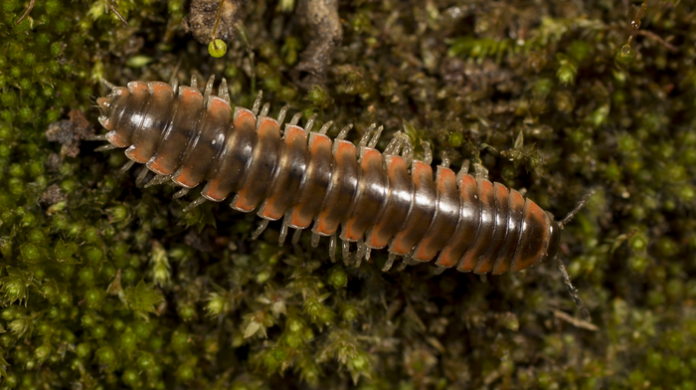A scientist at Virginia Tech in the US, Derek Hennen, has named a twisted-claw millipede after Taylor Swift
Nannaria swiftae, the Taylor Swift millipede, is part of a cohort of 16 new species discovered in the Appalachian Mountains of the United States. Scientists discovered the new species of millipede after a country-wide investigation.
It was a decidedly shorter hunt than the one undertaken by scientists at The University of Illinois, who found a soy-bean gene after 30 years of work.
Derek Hennen, Jackson Means, and Paul Marek at Virginia Tech in the US have described a new species in a research paper, published in the open access journal ZooKeys.
What are twisted-claw millipedes?
They live on the forest floor, where they feed on decaying leaves and other plant matter. Due to this, they are somewhat tricky to catch – because they tend to remain buried in the soil, sometimes staying completely beneath the surface.
While little-known, these invertebrates actually have an immensely valuable role as decomposers – breaking down leaf litter and releasing those nutrients into the ecosystem.
The newly-described millipedes range between 18 and 38 mm long, have shiny caramel-brown to black bodies with white, red, or orange spots, and have white legs.
The males have small, twisted and flattened claws on their anterior legs, which is the basis for their common name.
So, what connection does the millipede have to Taylor Swift?
The singer-songwriter gave one of the lead scientists a lot of emotional support, during the rigorous processes of academia.
Lead author of the study, Derek Hennen, said: “Her music helped me get through the highs and lows of graduate school, so naming a new millipede species after her is my way of saying thanks.”
How did the scientists find the new species of millipede?
The scientists say that they have held suspicions for a while that twisted-claw millipedes include many new species – but that these specimens remained anonymous for as long as decades.
To figure this out, the team travelled to 17 US states, checking under leaf litter, rocks and logs to find species that they could sequence DNA from. This led to the discovery of new species, just as they thought.
They found over 1,800 specimens on their field study and in university or museum collections. Another new species was named after Hennen’s wife, Nannaria Marianae.
The team discovered that the millipedes prefer to live in forested habitats near streams and are often found buried under the soil, exhibiting more cryptic behaviours than relatives.











